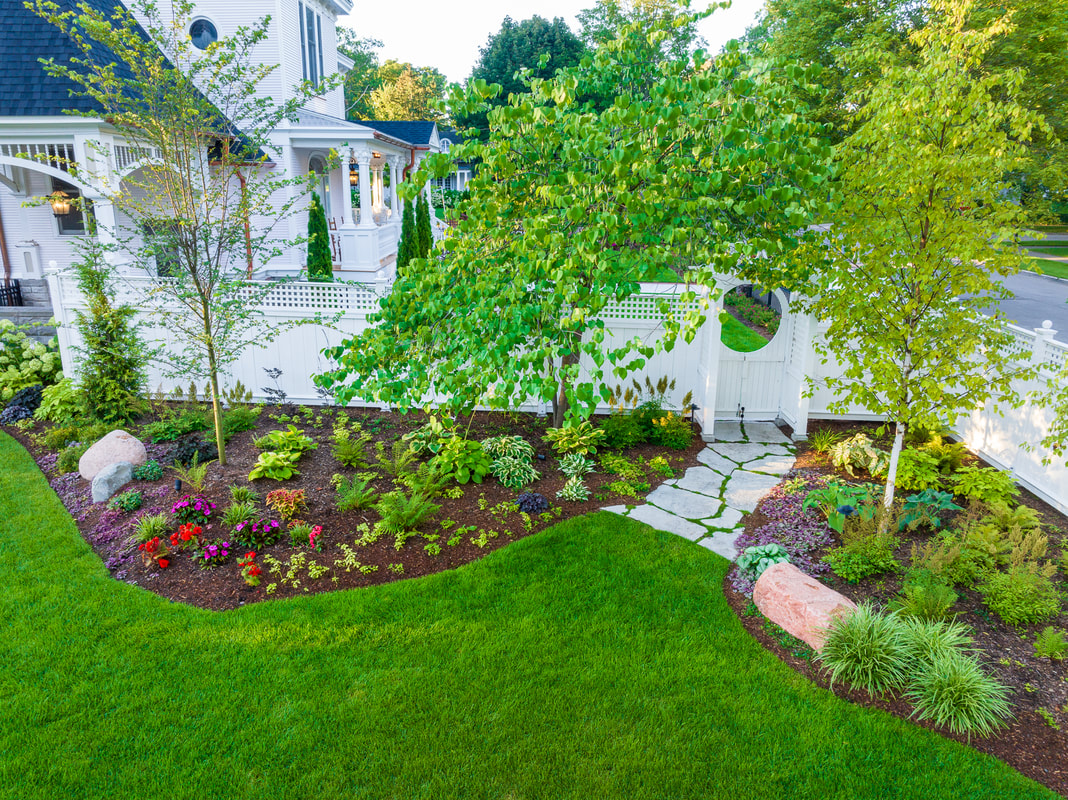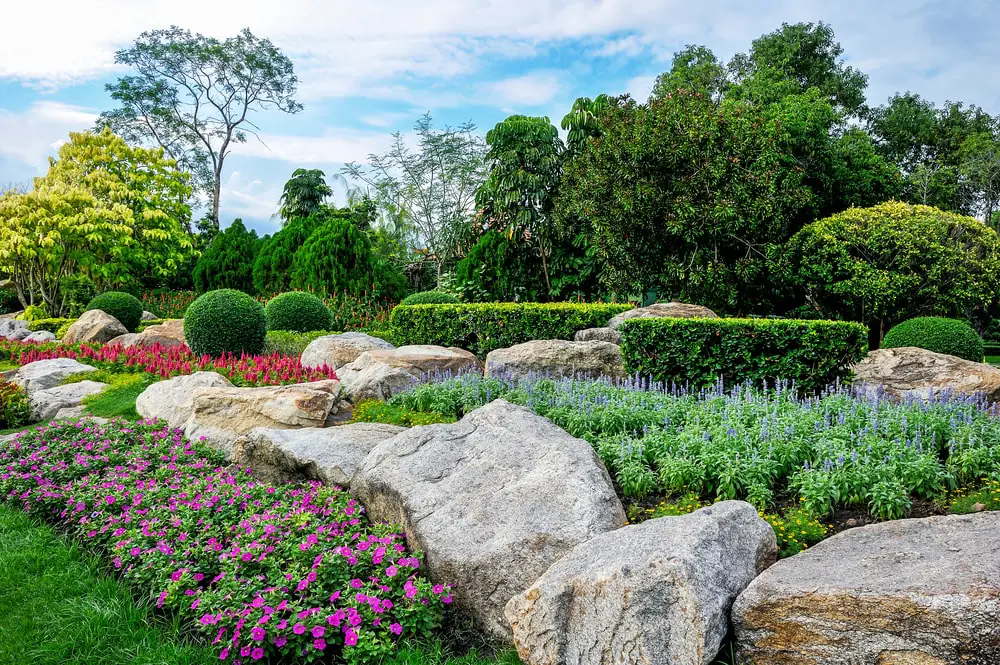The Basic Principles Of Hilton Head Landscapes
The Basic Principles Of Hilton Head Landscapes
Blog Article
Hilton Head Landscapes for Dummies
Table of ContentsThe Basic Principles Of Hilton Head Landscapes Hilton Head Landscapes Can Be Fun For EveryoneThe Basic Principles Of Hilton Head Landscapes 6 Simple Techniques For Hilton Head LandscapesHilton Head Landscapes Can Be Fun For EveryoneThe smart Trick of Hilton Head Landscapes That Nobody is DiscussingHilton Head Landscapes - The FactsA Biased View of Hilton Head Landscapes
Kind compatibility is additionally a significant element of unity in designone or more strikingly different forms benefit contrast and emphasis, but typically all other kinds need to have some resemblances for an unified appearance. Appearance describes how coarse or fine the surface area of the plant or hardscape material feels and/or looks.
Instances of plants with crude appearance include philodendrons, agaves, bromeliads, hollies, palms, and hydrangeas. Attributes that create fine texture include little foliage; slim, strappy fallen leaves (yards) or tall, thin stems; tiny, thick branches and tiny branches; long stems (vines); and small, fragile flowers.
The Single Strategy To Use For Hilton Head Landscapes
Many plants are average appearance, in that they can not be referred to as having either coarse or fine texture. They are defined by medium-sized leaves with straightforward forms and smooth sides. The average-sized branches are not densely spaced nor widely spaced, and the general form is normally rounded or mounding. Medium-textured plants serve as a history to link and link the rugged- and fine-textured plants.

To make a space feel smaller sized, position the crude textures along the outer border and the fine structures closest to the visitor. The information of the crude structure makes the plants show up closer and makes the room really feel smaller. The viewed structure of plants can likewise change with the distance from the plant.
The 7-Minute Rule for Hilton Head Landscapes
Strong colors boost the contrast and make the texture show up coarser, while soft colors can squash structure. Hardscape with a coarse texturesuch as very harsh rocks and bold, huge timberstends to make all plant material appear more moderate distinctive. Designers typically develop an appearance research study (Figure 8) theoretically to help determine the arrangement of plant materials.
Color in plant product and hardscape adds rate of interest and selection to the landscape. Shade is the most obvious aspect in the landscape and is normally the emphasis of many home owners; however, it is additionally the most temporary component, usually lasting only a couple of weeks a year for specific plants.
Hilton Head Landscapes - Truths
A straightforward summary of the shade wheel includes the 3 primaries of red, blue, and yellow; the three second colors (a mix of two primaries) of green, orange, and violet; and six tertiary shades (a mix of one nearby main and secondary color), such as red-orange. Color concept describes the connection of colors to each various other and just how they need to be made use of in a composition.

Comparable (occasionally called unified) color pattern are any type of 3 to 5 shades that are adjacent on the shade wheel, such as red, red-orange, orange, yellow-orange, and yellow, or blue, blue-violet, and violet (Landscaping bluffton sc). The shades belong to each other because they normally consist of 2 primaries mixed to form a second and 2 tertiary shades, which indicates they share typical residential properties
They often tend to have high comparison in between them. The most common collections are violet and yellow, red and environment-friendly, and blue and orange. Corresponding colors are typically discovered naturally in blossoms; a common pair is yellow and violet. Shade is discovered in the blossoms, vegetation, bark, and fruit of plants.
The 6-Second Trick For Hilton Head Landscapes
Eco-friendly vegetation in all its different shades is the leading color by amount, but other shades capture interest much more readily as a result of their high contrast to the color eco-friendly. Shade is likewise located in buildings, rocks, pavers, timber, and furniture. A lot of colors in all-natural materials, such as stone and timber, are typically soft and often tend to be variations of brownish, tan, and light yellow.
Shades have buildings that can affect emotions, spatial understanding, light high quality, balance, and emphasis. Cool colors tend to be relaxing and need to be made use of in locations for leisure and peacefulness.
A Biased View of Hilton Head Landscapes
Cool shades tend to recede and are regarded as being farther away, making an area really feel larger. Shade can also be utilized to record attention and straight views.
Brilliant yellow, which has the greatest strength, likewise has a high contrast with all various other shades (typically defined as a "pop" of shade) and should be utilized moderately. A small quantity of extreme shade has as much aesthetic weight as a huge amount of a much more restrained or weaker shade.
Analogous (in some cases called unified) color plans are any kind of three to 5 colors that are surrounding on the shade wheel, such as red, red-orange, orange, yellow-orange, and yellow, or blue, blue-violet, and violet. The shades are associated to every various other due to the fact that they generally consist of 2 key shades mixed to develop an additional and 2 tertiary shades, which implies they share common residential or commercial properties.
Hilton Head Landscapes Fundamentals Explained
Complementary shades are typically found normally in flowers; a common set is yellow and violet. Shade is located in the flowers, foliage, bark, and fruit of plants.
Green vegetation in all its different tones is the dominant shade by amount, however other colors capture interest quicker as a result of their high contrast to the shade eco-friendly - Landscaping bluffton sc - https://trello.com/w/h1tnhdlndscps. Color browse around these guys is likewise located in structures, rocks, pavers, timber, and furnishings. The majority of shades in all-natural materials, such as rock and wood, are typically soft and tend to be variations of brownish, tan, and pale yellow
The Hilton Head Landscapes Diaries
Shade is a crucial component for creating rate of interest and selection in the landscape. Colors have residential or commercial properties that can impact feelings, spatial assumption, light top quality, balance, and emphasis. One property of color is explained relative to temperaturecolors appear to be great or cozy and can influence feelings or sensations. Cool colors tend to be calming and should be used in locations for relaxation and tranquility.
Cool shades have a tendency to decline and are regarded as being further away, making an area really feel bigger. Color can also be made use of to catch interest and direct sights - https://h1tnhdlndscps.start.page.
Brilliant yellow, which has the greatest intensity, additionally has a high contrast with all various other shades (frequently defined as a "pop" of shade) and need to be utilized sparingly. A tiny amount of extreme color has as much visual weight as a big amount of a much more controlled or weaker color.
Report this page